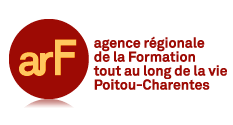Students Find E-Textbooks ‘Clumsy’ and Don’t Use Their Interactive Features
The report is based on a survey conducted this spring of students and faculty at five universities where e-textbook projects were coordinated by Internet2, the high-speed networking group. Students praised the e-books for helping them save money but didn’t like reading on electronic devices. Many of them complained that the e-book platform was hard to navigate. In addition, most professors who responded said that they didn’t use the e-books’ collaborative features, which include the ability to share notes or create links within the text.
The participating universities were Cornell, Indiana University at Bloomington, and the Universities of Minnesota, Virginia, and Wisconsin at Madison. The pilot is the result of a partnership between the institutions, Internet2, McGraw-Hill, and Courseload, an e-book broker. After paying $20,000 each, the participating institutions were provided with the Courseload platform and e-textbooks for up to 1,000 students to use. Each university was individually responsible for training professors and distributing the e-textbooks.
The pilot projects are based on a model pioneered at Indiana University in 2009 by Bradley C. Wheeler, the university’s vice president for information technology. The university buys bulk e-textbooks to distribute to students, who pay a mandatory course-materials fee to cover the costs, with the idea that the university can get a much better rate per book by buying in bulk.
Mr. Wheeler said he still believed in the approach, arguing that complaints about unfamiliarity are normal in any group adopting new technology.
“With technology, many things change with repeated use,” he said. “People have lots of early first impressions as they experience new things, and then over time you start to see things become more mainstream, as the technology improves and skills and even attitudes toward use improve.”
According to the report, students said e-textbooks “somewhat” became part of their learning routine but didn’t help them interact more with classmates or the professor, largely because most people didn’t use the collaborative features. Mr. Wheeler noted that the students of professors who did annotate their e-textbooks reported having a better experience, since “these capabilities make the electronic text much more than just an alternative to a physical book.”
Only 12 percent of students purchased a print copy of the book, Mr. Wheeler said.
The report contains suggestions for institutions trying the approach in the future. These include training professors to take advantage of the digital features and determining a method of evaluating e-textbooks independent of the e-reader platform.
Twenty-four universities—including Dartmouth College, Middlebury College, and Michigan State University—will join the pilot program this fall.







/https%3A%2F%2Fprofilepics.canalblog.com%2Fprofilepics%2F1%2F0%2F1076071.jpg)